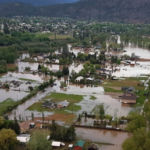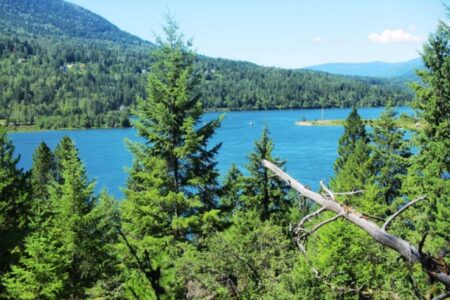Column: 'From the Hill' -- BC's natural resources
In mid-January I attended the British Columbia Natural Resources Forum in Prince George. This is one of the biggest gatherings of resource companies, government leaders and nongovernment organizations in Canada, and is always a good place to hear the latest news from that sector.
I was happy to see federal Natural Resources Minister Jim Carr there, as I’d urged him last year to consider attending. Opening the Forum from the heart of BC’s forest sector, Minister Carr concentrated on issues facing the forest industry, including beetle epidemics, fires and trade disputes. He reiterated the need to diversify our markets, in part by diversifying our products to take advantage of the mass timber revolution in building.
Doug Donaldson, the Minister of Forests, Lands, Natural Resource Operations and Rural Development, reported that the effects of last summer’s devastating fires were significant but not as great as feared. He and other industry members are now on a tour of Asia promoting BC products to the vast markets there.
Former MP Megan Leslie (now head of World Wildlife Fund Canada) spoke in the next session about how environmental groups can work constructively with industry to find solutions that are mutually beneficial. That message was echoed by Dallas Smith, a First Nations leader who ran for the Liberals in the last provincial election. Mr. Smith, who played an integral part in the epic Great Bear Rainforest agreement, emphasized that bringing disparate groups together—including industry, environmentalists and First Nations—is the only way we can move forward with resource extraction in the future.
The mining industry in British Columbia—and around the world—has been in a slump for quite a few years but there are clear signs things are looking up. Take coal for example. The world has turned away from using thermal coal for power plants, so prices for that commodity have tanked and will not rebound in the foreseeable future, if ever. However, metallurgical coal—harder, cleaner coal that is used to make steel—has been doing well. Luckily, it is metallurgical coal that British Columbia is famous for, both in the Elk Valley in the southeast and in the Tumbler Ridge area in the northeast.
Walter Coles, Jr., of Skeena Resources, gave a presentation on the future of metals. He pointed out that prospects for some geological products, especially oil, were very negative over the next few years and decades as the world turns to renewable power sources and electrifies global transportation systems. That electrification will require one product that BC produces a lot of—copper—and its prices are predicted to soar. Making another allusion to the decline of oil (for which world demand has peaked and will begin a slow decline), he suggested that BC could become the “Saudi Arabia of copper.”
News from the natural gas industry was less hopeful. World prices, tied to the stagnant price of oil, remain well below what is needed for the Canadian industry to flourish, and global markets are overflowing with supply from other countries.
First Nations representatives were highly visible at the Forum, both in the panels and throughout the trade show booths. They spoke eloquently about their readiness to assume a significant role in managing the resources of this country, and the industry and government representatives I talked to were very receptive to that future.
The wealth of Canada has been built on our shared natural resources, and with careful planning to ensure a healthy environment, those resources will continue to be the backbone of our national economy.



























Comments